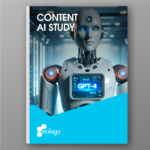The Robots.txt is used to control the crawling behavior of bots. What it has to do with it you will learn here with us! ... Continue reading


Artificial intelligence (AI) is a term that comes up in almost every technology conversation these days. From revolutionary AI-based products like DALL-E and ChatGPT from OpenAI to Google Bard and Google SGE redefining the way we search and process information, AI has changed our world. But what exactly is artificial intelligence? Put simply, it is machines or software that have human-like intelligence, decision-making ability and learning capacity.
Artificial intelligence (AI) refers to systems or machines that exhibit human-like abilities such as learning, understanding, reasoning, problem solving and decision making. It encompasses various technologies, including machine learning, natural language processing and robotics. The development of AI algorithms has enabled machines to perform complex tasks, from simple daily tasks to complex decisions that previously required human intelligence alone.
The evolution and key technologies of AI
The evolution of AI can be divided into different phases, starting with the first theoretical concepts through to modern systems such as ChatGPT, OpenAI’s DALL-E, Google Bard and Google Gemini. These developments are based on advanced AI algorithms and offer functions ranging from text generation and image recognition to comprehensive chatbot services. Particularly noteworthy are generative AI models that can create new content such as text, images and even music.
AI is used in numerous industries, including:
| Advantages | Disadvantages |
| Increased efficiency and automation of routine tasks | Risk of job losses |
| Support for decision-making through data analysis | Ethical concerns and data protection issues |
| Improvements in medicine through more precise diagnoses | Potential dangers from autonomous systems |
| Personalisation of user experiences on websites and in apps | Danger of bias and discrimination in AI algorithms |
The future of AI looks promising, with innovations that have the potential to fundamentally change the way we live. From the advancement of autonomous vehicles to the creation of smart cities that use AI to optimise traffic and use energy more efficiently, the range of possible advances is vast. Another exciting area is the development of AI in education, where personalised learning plans could help every student to reach their full potential.
The rapid progress of AI technology is also accompanied by challenges, particularly in the areas of ethics and safety. Creating policies that both encourage innovation and prevent misuse will be crucial. In addition, AI development must be inclusive and equitable to ensure that the benefits of the technology accrue to all and not just a privileged group.
Artificial intelligence has established itself as one of the most transformative fields of modern technology. With applications ranging from medicine to robotics to personal entertainment, AI has the potential to impact almost every aspect of our lives. The benefits, such as increased efficiency and the ability to solve complex problems, are obvious. However, we must also carefully consider the potential dangers and ethical dilemmas that come with its advancement. The future of AI is undoubtedly exciting, but its success will depend on how we address these challenges and ensure that the technology is used for the benefit of all.
Dr. Beatrice Eiring holds a doctorate in linguistics and studied German and business administration with a focus on marketing at the University of Würzburg. She is Head of Content Creation at eology GmbH and advises our customers on all content issues.
Would you like to take a look at the results of our content AI study? 💡


